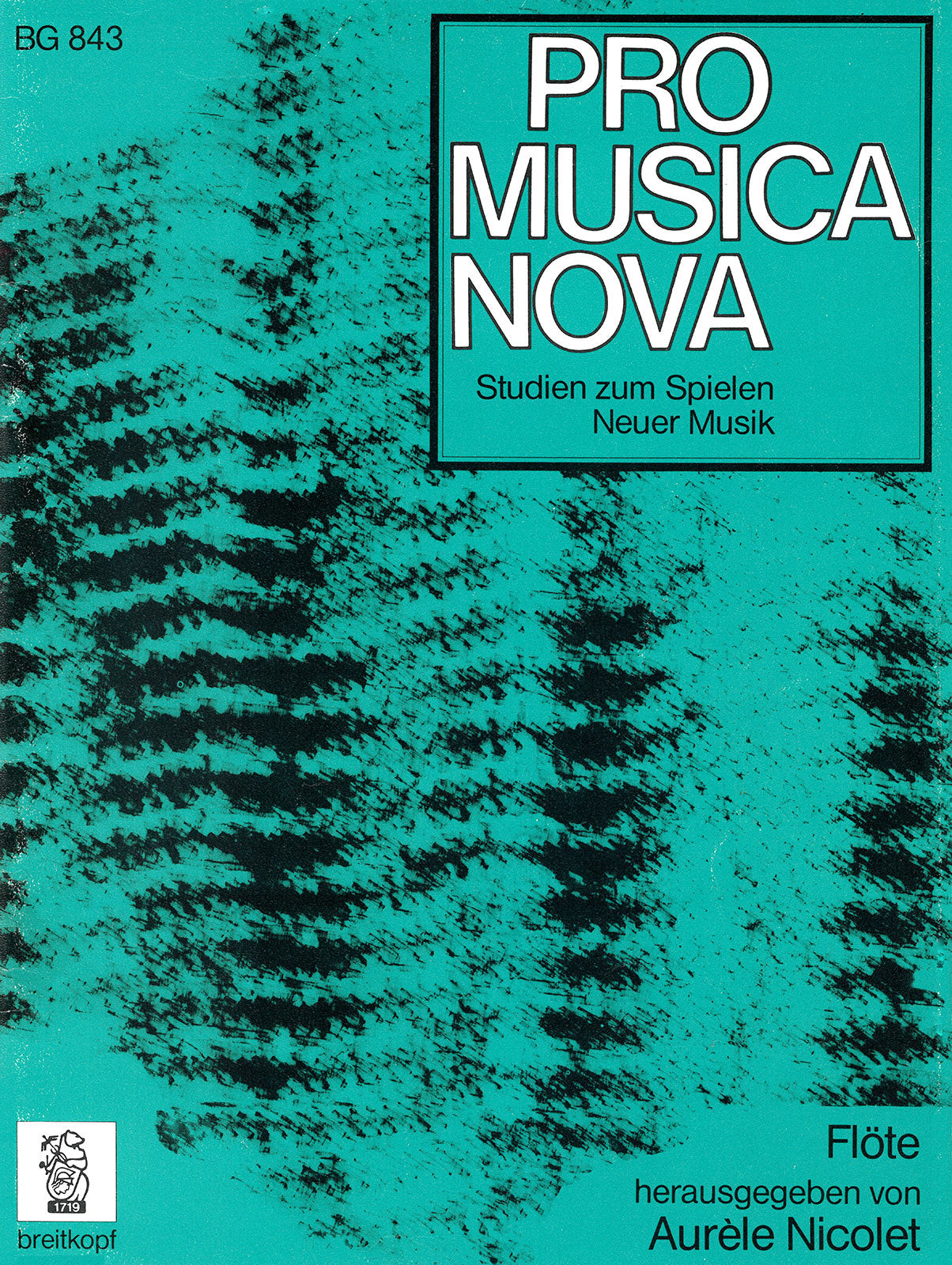Studies for Playing Contemporary Music - Flute
Expected to ship in 1-2 weeks.
- Editor: Aurèle Nicolet
- Instrumentation: Flute
- ISMN:
- Size: 9.1 x 12.0 inches
- Pages: 52
Description
"The intention of the present collection is to acquaint the player with the new playing methods as well as at the same time to instruct him in the manner of their notation and the possibilities of their realization, in this way helping to eliminate the prejudice against contemporary music. A curiosity for the new techniques goes hand in hand with an openness toward the new styles of composition – the two sides of music which are related to one another in different ways more today than in former times. The distinction between the functions of the composer and those of the interpreter is eliminated – the composer must be just as well acquainted, accurately to the smallest detail, with the idiosyncracies and all the present-day possibilities of the instruments for which he is writing as the performer is; the interpreter, on the other hand, has a greater freedom in the interpretation than he had before (and therefore also a greater responsibility for the piece)."
(Aurèle Nicolet)
Contains excerpts from:
- Denissow, Edison | Solo pour Flûte
- Dittrich, Paul-Heinz | Flute Cadenza
- Donatoni, Franco | Studio per Flauto
- Erbse, Heimo | Flageoletts for two Flutes
- Holliger, Heinz | Lied for Flute
- Huber, Klaus | Ein Hauch von Unzeit I
- Hufschmidt, Wolfgang | Games for Flutes
- Ioannidis, Yannis | Fragmento II
- Lechner, Konrad | Three Pieces
- Paporisz, Yoram | Three Miniatures
- Vieru, Anatol | Flutexercises
- Wildberger, Jacques | Retrospective I
Publishers use a lot of words to describe what they sell, and we know it can be confusing. We've tried to be as clear as possible to make sure you get exactly what you are looking for. Below are descriptions of the terms that we use to describe the various formats that music often comes in.
Choral Score
A score for vocalists that only contains the vocal lines. The instrumental parts are not there for reference. Generally, cheaper than a vocal score and requires multiple copies for purchase.
Facsimile
Reproductions of the original hand-written scores from the composer.
Full Score
For ensemble music, this indicates that the edition contains all parts on a single system (there are not separate parts for each player). In larger ensembles, this is for the conductor.
Hardcover
Hardbound. Generally either linen-covered or half-leather.
Orchestral Parts
Similar to a wind set, this is a collection of parts. In the case of strings, the numbers listed are the number of copies included, though generally these are available individually (often with minimum quantities required).
Paperback
When publishers offer multiple bindings (e.g. hardcover) or study scores, this is the "standard" version. If you're planning to play the music, this is probably what you want.
Performance / Playing Score
A score of the music containing all parts on one system, intended for players to share. There are not separate parts for each player.
Set of Parts
For ensemble music, this indicates that there are separate individual parts for each player.
Solo Part with Piano Reduction
For solo pieces with orchestra, this is a version that contains a piano reduction of the orchestra parts. For piano pieces, two copies are typically needed for performance.
Study Score
A small (think choral size) copy of the complete score meant for studying, and not playing. They make great add-ons when learning concertos and small chamber works.
Vocal Score
A score prepared for vocalists that includes the piano/organ part or a reduction of the instrumental parts.
Wind Set
For orchestral music, this is a collection of wind and percussion parts. The specific quantities of each instrument are notated.
With Audio
In addition to the printed music, the edition contains recordings of the pieces. This may be an included CD, or access to files on the internet.
With / Without Fingering (Markings)
Some publishers prepare two copies - a pure Urtext edition that includes no fingering (or bowing) suggestions and a lightly edited version that includes a minimal number of editorial markings.



